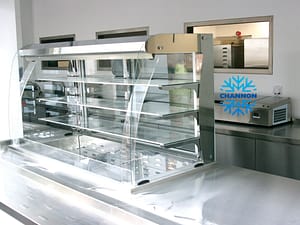In the realm of bathroom renovations, plumbing stands as a cornerstone, often dictating the scope, design, and functionality of the entire project. Beyond the aesthetic upgrades and modern fixtures lies the complex network of pipes, drains, and faucets that ensure your bathroom is not only beautiful but also fully functional. Given the intricacies involved, planning your plumbing bathroom renovation with meticulous care and seeking professional consultation cannot be overstated.
Whether you’re dreaming of a luxurious spa-like retreat or a more efficient, eco-friendly space, understanding and addressing the plumbing foundation is critical. This guide embarks on a journey through the essentials of bathroom plumbing, from deciphering the basics of your system to making informed decisions on fixtures and features that align with both your desires and plumbing realities.
Understanding the Plumbing System in Your Bathroom
Basics of Bathroom Plumbing
Bathroom plumbing consists of two main systems: the supply system, which brings fresh water in, and the waste system, which carries water and waste out. Key components include:
- Supply Lines and Valves: These deliver cold and hot water to your fixtures.
- Drains: Every fixture has a drain that allows wastewater to exit, connected through a series of pipes to your home’s main sewer line.
- Vent Pipes: These prevent sewer gases from entering your home and ensure water and waste move smoothly through the drain pipes.
- Fixtures: Sinks, toilets, bathtubs, and showers—each has its specific plumbing requirements.
Understanding these components and their functions within your bathroom lays the groundwork for any renovation project, ensuring changes or upgrades are not only cosmetic but also improve the room’s overall plumbing efficiency and reliability.
Identifying Your Needs
Assessing your current bathroom’s plumbing system is crucial in determining the scope of your renovation. Consider:
- Age and Condition: Older systems may require complete overhauls to meet modern standards and efficiency.
- Capacity: Ensure your system can support additional fixtures or luxurious upgrades, like a dual shower system or a freestanding bathtub.
- Compliance: Upgrades should meet current building codes and regulations for plumbing systems.
Identifying these needs early on will guide your renovation decisions, ensuring the final project is not only visually appealing but also functionally sound.
Planning Your Plumbing Renovation
Design Considerations
The layout and design of your bathroom are intricately linked to its plumbing. Changing the location of fixtures significantly impacts the complexity and cost of your renovation. Key considerations include:
- Spatial Layout: Work with the existing plumbing layout if possible to minimize the need for major pipe rerouting.
- Fixture Placement: Consider the practicality and ease of installation when deciding on new locations for your toilet, sink, or shower.
Selecting Fixtures and Features
Choosing the right fixtures and features is pivotal in marrying design with functionality. Consider:
- Water Efficiency: Opt for fixtures that conserve water without sacrificing performance, such as low-flow toilets and showerheads.
- Style and Comfort: Select fixtures that complement your bathroom’s overall design while providing the comfort and convenience you desire.
- Compatibility: Ensure your chosen fixtures are compatible with your existing plumbing or any planned upgrades.
Upgrading Plumbing During Renovations
When to Upgrade Pipes
Identifying the right time to upgrade your plumbing pipes is crucial for the longevity and efficiency of your bathroom renovation. Key signs include:
- Age: Pipes older than a few decades may be nearing the end of their lifespan.
- Material Concerns: Older materials like galvanized steel or lead need replacement for health and efficiency reasons.
- Visible Wear: Corrosion, leaks, and frequent blockages indicate it’s time for an upgrade.
- During Major Renovations: If you’re already making significant changes, it’s an opportune time to replace old piping.
Materials to consider for new pipes include PEX for its flexibility and ease of installation, and copper for its durability and resistance to corrosion.
Water Efficiency
Incorporating water-saving fixtures is not only eco-friendly but also cost-effective in the long run. Consider:
- Low-Flow Toilets and Showerheads: These reduce water usage without compromising performance.
- Touchless Faucets: Minimize water waste with automatic shut-off features.
- Efficient Piping Layout: Reducing the distance hot water has to travel saves water and energy.
Common Plumbing Challenges in Bathroom Renovations
Dealing with Limited Space
Small or awkwardly shaped bathrooms present unique plumbing challenges. Optimizing these spaces requires:
- Corner Fixtures: Utilize corner sinks or toilets to save space.
- Wall-mounted Options: These can make small bathrooms feel larger and more open.
- Creative Piping Solutions: Skilled plumbers can reroute pipes efficiently to maximize space.
Addressing Old or Outdated Systems
Renovating bathrooms in older homes often involves navigating legacy plumbing systems. To address these challenges:
- Assessment: Have a professional assess the condition and compliance of existing plumbing.
- Upgrades: Update old systems to meet modern standards, focusing on both functionality and water efficiency.
- Preservation: Where possible, preserve the home’s character by integrating modern plumbing solutions discreetly.
Hiring a Plumbing Professional
When to Call in the Experts
Certain aspects of plumbing work, particularly those related to major installations or modifications to the water supply and waste systems, require professional skills. Knowing when to call in an expert can save time, money, and ensure compliance with local building codes.
Tips for Choosing a Plumber
Selecting the right plumbing professional is critical for a successful renovation. Look for:
- Licenses and Certifications: Ensure the plumber is fully licensed and insured.
- Experience: Look for a plumber with specific experience in bathroom renovations similar to yours.
- References: Check reviews and ask for references to gauge the plumber’s reliability and quality of work.
- Clear Communication: A good plumber should be able to explain the proposed work in understandable terms and provide a detailed estimate.
Legal and Compliance Considerations
Understanding Building Codes and Regulations
Familiarizing yourself with the local building codes and regulations is essential before beginning any plumbing work. These codes ensure that plumbing systems are installed and functioning safely and effectively. Compliance is not just about legality; it’s about ensuring the safety and well-being of your household.
Permits and Inspections
Most significant plumbing work will require permits before work begins. The process includes:
- Applying for Permits: Contact your local building authority to determine which permits are required for your renovation.
- Inspections: After the work is completed, inspections by local authorities ensure the plumbing work meets all standards and codes.
Budgeting for Plumbing Work in Your Renovation
Estimating Costs
Creating a realistic budget for plumbing work involves considering the cost of materials, labor, permits, and any unexpected issues that may arise. Get multiple quotes to understand the market rate for the work you need done.
Saving Money without Compromising Quality
Cost-saving measures can include:
- Comparing prices and options for fixtures and materials.
- Choosing updates that require minimal structural changes to existing plumbing.
- Planning efficiently to avoid last-minute changes that could inflate costs.
Conclusion
Thorough planning, understanding the complexities of plumbing work, and seeking professional guidance are paramount in navigating bathroom renovations successfully. By prioritizing both functionality and compliance alongside aesthetic desires, homeowners can ensure their renovated bathrooms are not only beautiful but safe, efficient, and built to last. Remember, the goal of a renovation is to enhance your home’s value and your quality of life; investing in professional plumbing services is investing in the future of your home.












